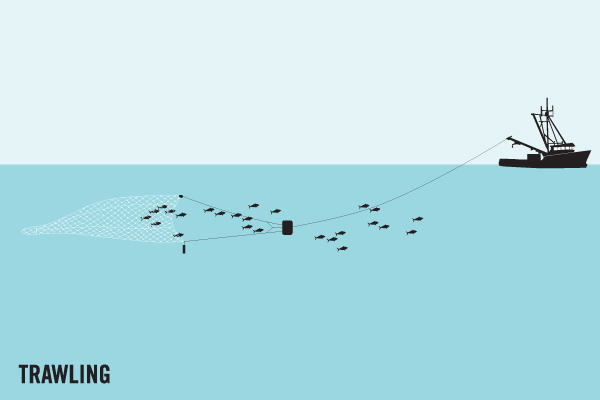Average Weight/Length
Averages a pound or less but can exceed three pounds.
Other "Popular" Names for this Fish
Silver Mullet, Lisa Blanca, Liseta
Location Habitat
Shallow coastal waters. Enters fresh water, but less commonly than the Black Mullet. Inhabit sandy coasts and littoral pools but also occurs in muddy bottoms of brackish lagoons and estuaries. Sometimes penetrate rivers. May also be found on coral reefs. Juveniles are common in coastal waters and are known to find their way to estuaries and coastal lagoons. Growth in juveniles is moderate (30-40 cm in 4 years). Adults form schools. Feed on microscopic or filamentous algae and small juveniles of planktonic organisms. Reproduction occurs between March and August. Spawn several million eggs provided with a notable yolk. Oviparous, eggs are pelagic and non-adhesive (Ref. 205). An important foodfish, it is marketed fresh and salted
Biology & Physical Description
Difficult to distinguish from the Black Mullet, especially if similar in size; however, the Silver Mullet is usually smaller, lighter in color and with less vivid stripes. The caudal fin of the Silver Mullet is edged in black, so that in the water, the tail looks as if it's marked with a black "V." The tail of the Black Mullet is dark overall. Dorsal spines (total): 4 - 5; Dorsal soft rays (total): 8-9; Anal spines: 3; Anal soft rays: 9 - 10. Diagnosis: body stout, rounded in cross-section; head broad; inter-orbital space flat; a well developed adipose eyelid covering most of pupil; upper lip simple, thicker and deeper than in most Mugil species, armed with 2-3 rows, teeth in outer row curved, monocuspid and widely spaced; a vertical line from hind end of upper jaw positioned midway between posterior nostril and anterior eye margin; maxillary pad not visible below corner of mouth when closed; origin of 1st dorsal fin equidistant from snout tip and caudal-fin base; pectoral axillary process well developed (30-37% of pectoral-fin length); dorsal and anal fins entirely (and more or less densely) covered with scales; 11-12 scale rows between origins of first dorsal and pelvic fins
Geographic Species Map (Fishbase.org Map)
|
|

|
Summary of Distribution: Western Atlantic: Nova Scotia, but uncommon north of Cape Cod (Harrison, pers. Comm.) to Argentina. Eastern Atlantic: Senegal River outlet southwards to the Congo River outlet (Democratic Republic of the Congo). Eastern Pacific: Gulf of California to Chile |
|
Note: Distribution range colors indicate degree of suitability of habitat which can be interpreted as probabilities of occurrence (fishbase.org) |
|
Sport Fishing Techniques
|
|
TrawlingTrawling is when.... |
|
Tackle & Baits
If you would fish for Silver Mullet with hook and line, the best spot to try would be around fish-cleaning tables. Watch for Mullet milling around. If any are spotted, use a tiny hook baited with a bit of entrail from cleaned fish, especially roe, if available. They are more easily hooked if you actually see them bite, since they generally suck in the bait and, just as quickly, eject it.
Game Rating
Game Rating : 7/10
Game Description :
Seldom caught on hook and line, but puts up a spirited fight, marked by wild jumps.
Food Rating
Game Rating : 8/10
Game Description :
Excellent, although most Silver Mullet end up as bait, not dinner.
Picture (Fish)
|
|
|
|
|
|




















 White Mullet
White Mullet 






